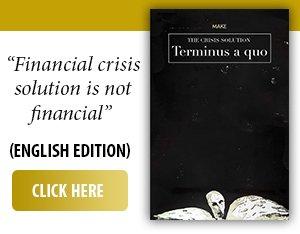Europe faces a significant shortage of military personnel and an insufficiency of defense capabilities, despite increased spending on this sector since the beginning of the Russian-Ukrainian conflict, according to a report prepared by the British think-tank the International Institute for Strategic Studies (IISS), documented this Friday at the IISS Prague Defense Summit, an event that ended yesterday. The cited report highlights growing concerns about the future of military support for Ukraine, especially after US President-elect Donald Trump's return to the White House, and highlights an enduring problem: European armed forces remain underpowered, and attracting young towards a military career becomes a serious challenge, affecting recruitment significantly.
The authors of the quoted document claim that, although the dependence on the US for military support has decreased through the increase in European defense spending, it remains a reality in several areas. Despite the fact that NATO member states in Europe have increased their defense budgets by around 50% since 2014, with the annexation of Crimea by Russia, the vulnerabilities in the European defensive capacity have come to the surface with the conflict starting in 2022. European defense funding registered an annual growth of 3.9% in real terms since 2014. This development allowed a significantly higher allocation for modernization and recapitalization, the percentage defense budgets for procurement and research and development (R&D) rising to 32% in 2024, exceeding NATO's recommendation of 20%. However, this targeting of resources has led to a decrease in the allocation for military personnel, which has fallen on average from 60% to 40% of defense budgets. IISS experts say that the lack of qualified personnel in many European armies risks affecting the ability to fulfill NATO obligations and show that in some member states, the recruitment of new soldiers is made difficult by competition with the private sector and a military career is not attractive enough for young Europeans. Moreover, this problem is compounded by demographic changes, which indicate a decline in the young population eligible for recruitment. That is why some states, especially in Central and Eastern Europe, have decided to call on reservists and are considering the reintroduction of some forms of conscription to ensure sufficient personnel.
The reduction in troop numbers comes as NATO has created a new force model aimed at keeping more than 100,000 troops ready for deployment in a maximum of 10 days. Therefore, the authors of the cited study state that NATO member states must improve their capabilities, inventories and funding to support these commitments.
• The European defense industry shows signs of revival
Although the main objectives of increasing the sums allocated to defense were the improvement of military training and the strengthening of defensive capabilities, but specialists raise questions about the ability to maintain the current pace of financing in the long term, in the conditions of increasing fiscal pressures. IISS experts point out that recently the UK House of Commons Defense Committee drew attention to vulnerabilities related to the sustainability of public funding and the effectiveness of investments. Funds used to supplement defense and procurement budgets put pressure on transparency and long-term security of funding, in the context of significant fiscal pressures identified by the International Monetary Fund (IMF). Also, the resumption of the European Union's fiscal rules could limit the growth of defense spending in the absence of an exemption from excessive deficit procedures.
However, IISS experts say that the European defense industry, which has been constrained since the end of the Cold War, is starting to show signs of revival in areas such as air defense and artillery, where production has increased to meet demand, particularly to support Ukraine. The Rheinmetall company, for example, increased its production of 155 millimeter shells tenfold to 700,000 units annually. But for complex systems, such as MBDA's Aster missile, the production period is much longer.
Currently, approximately half of the military equipment orders of European NATO member countries are allocated to European companies, which marks a considerable increase over the previous percentage of 34% intended for American systems.
Moreover, the shares of European defense industry giants such as BAE Systems, Leonardo, Rheinmetall and Saab have seen considerable gains since 2022, and BAE Systems has launched new recruitment campaigns, demonstrating confidence in the future of this market. In 2024, significant acquisitions continued in the sector, such as the integration of ESG by the company Henso LTD or the takeover of Leonardo's underwater weapons division by Fincantieri. IISS specialists also noted an intensification of governmental and industrial partnerships, such as the Trinity House Agreement between Germany and Great Britain, regarding closer cooperation between the armed forces and the defense industry of the two most important European countries. The partnership between Leonardo and Rheinmetall Military Vehicles, established in October 2024, also exemplifies European industrial collaboration, while transatlantic agreements, such as the one between Rheinmetall and Lockheed Martin, open new perspectives for collaboration.
• Availability at the Defense Division within Airbus
The IISS study also states that there is fierce competition for raw materials and components between the civilian and military sectors, and this competition is affecting defense production. In addition, supply chains for certain essential materials, such as gallium, used in radar and sensors, are vulnerable, given the almost total dependence on suppliers outside Europe, such as China. That is why Europe is trying to strengthen its supply chains by "onshoring" (bringing production to Europe) and "friendshoring" (moving production to friendly countries). At the same time, in many European countries, the pandemic accelerated the accumulation of stocks of strategic materials.
In this context, some companies face difficulties. Airbus recently announced staff reductions in the Defense and Space Division and ordered 2,500 layoffs last month, as challenges related to supply chain failures, long lead times and a lack of skilled personnel persist, according to the source cited.
Meanwhile, increasing government demand is also contributing to competition for resources, and European governments are working to ensure security of demand in this complex context.
We remind you that the European Union has introduced financial initiatives to support companies interested in increasing their production, such as the Ammunition Production Support Act, which is already starting to have an impact. At the same time, the European Commission published in 2024 the first European Defense Industrial Strategy, intended for joint acquisitions and the development of critical capabilities. However, access to private finance remains limited for the defense industry, in part due to stringent environmental and governance requirements that make attracting private capital more difficult.
The quoted document shows that the governments of European NATO member states must send clear signals of demand and support for defense investments, so as to increase investor confidence. The European Commission argues that dedicated public funding is essential to help defense companies, especially SMEs, but there is a perception that the risks of defense investment are high. Unlike the United States, Europe is more cautious about promoting defense assets and investment opportunities, which reduces the success of technology start-ups in the field.
In light of the above, in order to adapt to the new strategic realities, Europe needs to recalibrate its defense policy, encourage long-term investment in the defense industry and promote financial stability. Only through sustained, planned efforts and the support of stable funding will Europe be able to ensure a robust defense and contribute to stability on the continent.
















































